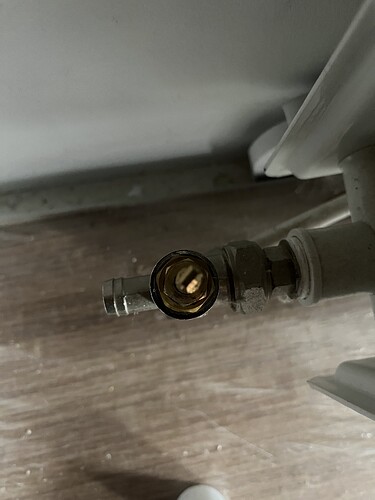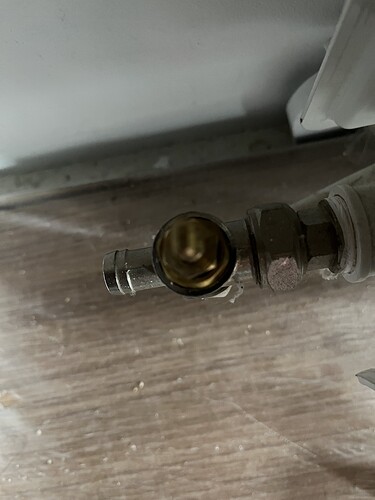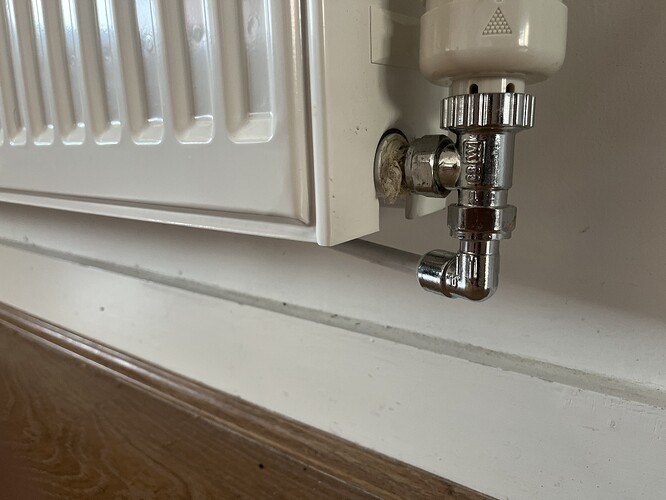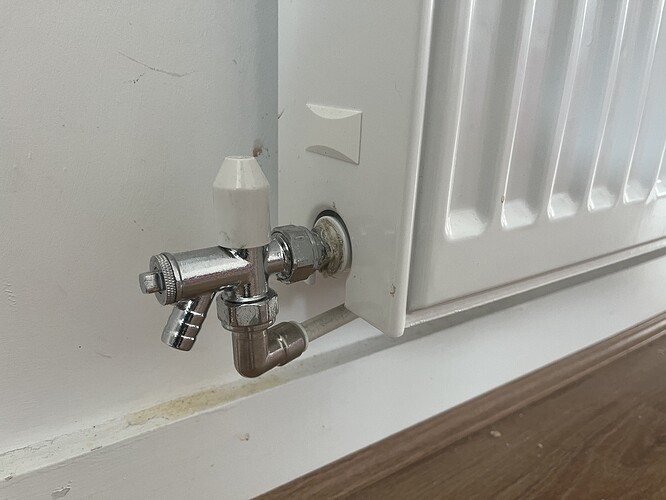Great, see how that changes things. is there a valve of any sort at the other end? If so open this too.
You can use your hands in the first instance. Its not super accurate but for your kitchen to not be warm we are looking for a really big difference. If your flow temperature is about 40C then feel the pipes at either end of the kitchen radiator. If they feel the same, or similar temperature then water is flowing through the radiator fairly quickly which is what we want. If there is a marked difference or one end is virtually cold then we have a problem. Also check that your radiator feels similarly warm all over, and that the back panel is also warm.
Its also worth comparing with a radiator in another room, living room for example, to see if the pipes feel a similar temperature. We don’t care about minor differences of a degree or two we are trying to find out of for example living room pipes are hot vs kitchen pipes are only warm.
Hopefully it is balancing as its fairly easily resolved with some trial and error. I would be tempted to turn the thermostat up really high (like 25-30C) so it is always calling for heat. This removes it as a factor, if the kitchen gets to your desired temperature with the thermostat really high then you know the radiator is capable of it and you need to focus on the thermostat/hallway problem.
Your radiator schedule shows the hallway radiator as being large compared to the heat loss so it could well be getting “too hot” and affecting the thermostat. I’d take the hallway heat loss with a pinch of salt as they are notoriously hard to estimate due to being funny shapes, have doors, letterboxes, heat rising upstairs, etc.
This is right in the way radiators are normally plumbed. Heat isn’t lost progressively. Heat is piped to each of the radiators and then the heat is lost in the radiator, with only a small loss in the pipework. Usually the radiators are all fed individually with a hot pipe (the flow) and then they all feed back into the return. The flow pipe starts as a single pipe from the heatpump and will then be split into upstairs/downstairs then split to individual radiators. The key thing to think about though is that whatever happens the water flows through the flow pipes (red), then through a single radiator, and then through the return (blue) pipes.

This means that all radiators should be fed by water at the same (or similar) temperature. Yes some pipe runs to some radiators will be a bit longer than others but in a terraced house it won’t be that different and (in theory at least) they should be insulated.
There is another way to plumb radiators and that is with a single pipe that goes around the house and each radiator takes some water and then puts it back into the same pipe. This is relatively unusual, frankly unlikely, in a modern house. However your installers description does sound a bit like it. These are generally not suitable for heat pumps, and if it is the case then your heat loss survey is wrong because it doesn’t take account of the radiators at the end of the circuit getting much cooler water. In this case if you think about it the water is going through multiple radiators, losing heat in each one, meaning the next one starts with cooler water.

I think its very unlikely that you have the plumbing shown in the second picture, but I mention it as possibility because of what your installer has said and the fact it is one (admittedly unlikely) explanation for your problems.






